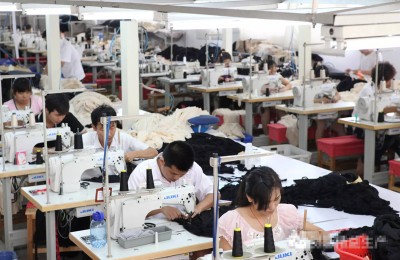Functions of flame-retardant denim (1)
Tag:
Flame retardant fabric, flame retardant denim, oil-repellent, water-repellent, UV-resistant denim, denim clothing
Denim clothing is popular because of its unique charms such as wear resistance, crispness, comfort, and fashionable style. It has especially attracted many young consumers and has become a favorite clothing for middle-aged people and even the elderly. The sales volume in the international clothing market is very high and it has always been a popular fabric in the market. Denim finishing process is a key process that gives denim its unique style and functionality. With the advancement of technology and the development of new additives, denim finishing has made great progress on the basis of traditional processes, from traditional rinsing and stone grinding to iron-free, waterproof and oil-repellent, The finishing of various functions such as UV resistance and health changes the quality and grade of denim clothing to multi-functionality, giving denim clothing higher added value. 1. No-iron finishing Most denim fabrics are pure cotton fabrics. Cotton is a cellulose fiber, which makes the flame-retardant fabrics prone to wrinkles under the action of external forces, affecting their appearance and wearing comfort. No-iron finishing uses anti-wrinkle finishing agents to improve the anti-wrinkle and anti-wrinkle properties of the fabric through the cross-linking effect of the finishing agent and fiber macromolecular chains, thereby achieving good results of no-iron. After finishing, denim fabrics and clothing are easy to care for, not easy to wrinkle when worn, have good flatness after machine washing, do not need to be ironed, can be worn after washing, and feel comfortable. In particular, anti-wrinkle finishing of thin denim is even more important. Thin denim fabrics that have been finished without ironing can achieve good results in terms of feel, elasticity, and anti-wrinkle performance, but the water absorption and strength of the fabric will be reduced. In addition, it should be noted that most no-iron finishing agents contain formaldehyde, which will cause the fabric to release free formaldehyde after finishing, affecting health and the environment. Therefore, ultra-low formaldehyde or formaldehyde-free finishing agents should be used, and process control should be strengthened to reduce formaldehyde as much as possible. Formaldehyde-free finishing has become the development trend of no-iron finishing in the future. Currently, commonly used formaldehyde-free finishing agents include BTCA (butane tetracarboxylic acid), CA (citric acid), BHES (β-bishydroxyethyl sulfone), etc. But the effect is generally worse than ultra-low formaldehyde finishing agents. Denim finishing process example: LF-2 resin 100~130 g/L Magnesium chloride catalyst 25 g/L Salt-resistant type Silicone emulsion 40 ~ 60 g/L Powerful protective agent 10 g/L Non-ionic penetrant 2 ~ 4 g /L Dip rolling (two dips and two rollings, rolling residue rate 80% ~ 90%) → pre-baking (100 ℃) → baking (150 ~ 170 ℃, 1 ~ 2 min) → water washing → soaping → water washing → drying .
:Textile
AAGFHTRYKUYIU7OUP
Disclaimer:
Disclaimer: Some of the texts, pictures, audios, and videos of some articles published on this site are from the Internet and do not represent the views of this site. The copyrights belong to the original authors. If you find that the information reproduced on this website infringes upon your rights, please contact us and we will change or delete it as soon as possible.
AA





